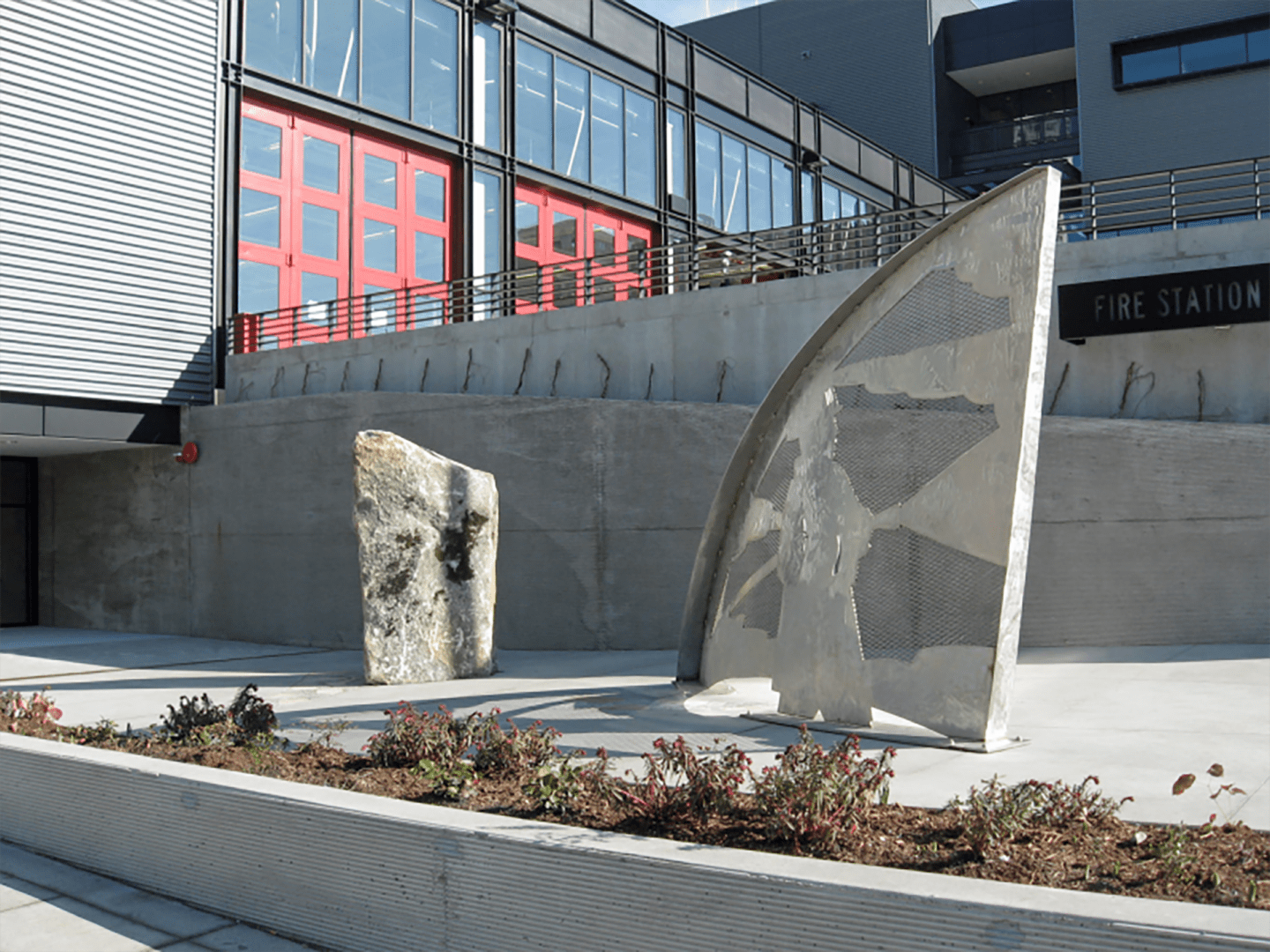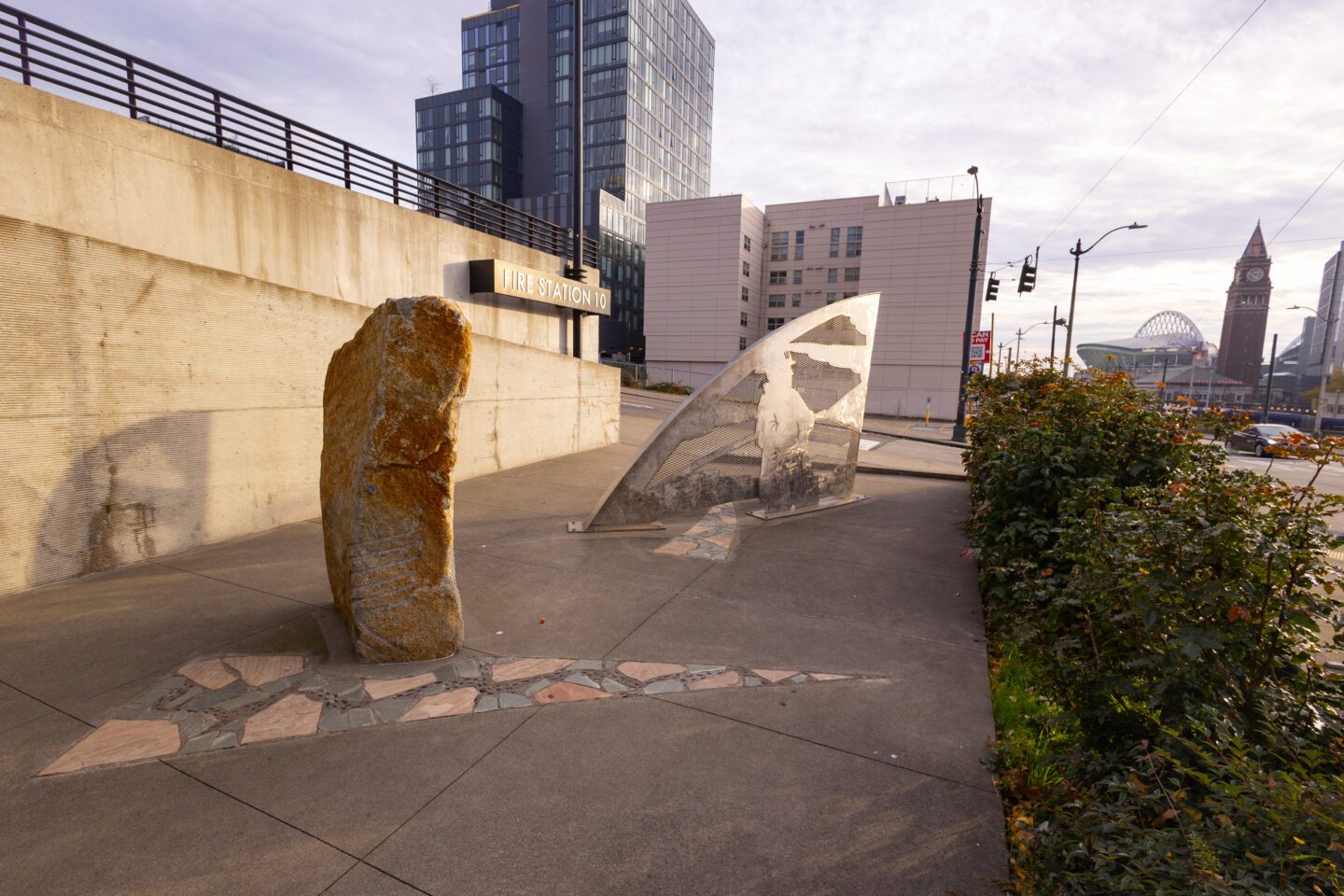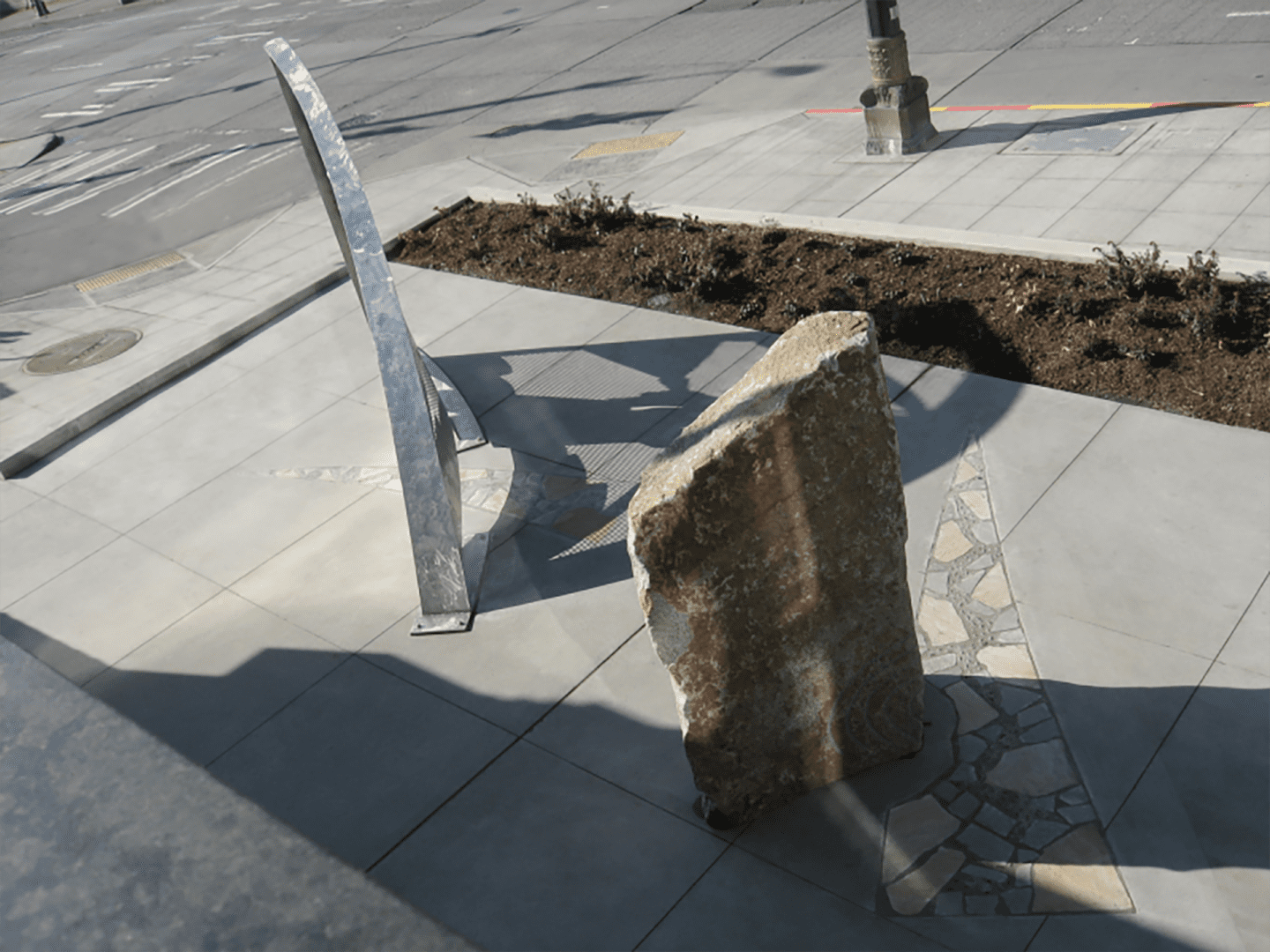-
Call and Response
Fire Station 10, 400 S Washington Street
The block between 4th Avenue S and 5th Avenue S along S Washington Street holds the first of several fire station-related works on the tour. Three are here and another set lies two stops ahead. The works on this block were commissioned by the City and funded by the Fleets and Facilities Department Fire Facilities and Emergency Response Levy 1% for Art funds, which were approved by voters in 2003. The artworks share commonalities in that they all, not unsurprisingly, reflect the spirit of the fire station, but they also reflect the history and cultures of the surrounding community.
Call and Response by Stuart Nakamura (2007)
At the corner of 4th Avenue S and S Washington Street, you’ll find Stuart Nakamura’s (b. 1953) three-part work, Call and Response. Nakamura is known for his site-specific artworks inspired by the cultural history, location, and character of the work’s setting, and this one is no exception. For Call and Response, his inspiration came from the fire station’s location on the border between Pioneer Square and the International District, the history of the area, including the locale of the Great Seattle Fire which destroyed the city’s entire central business district in 1889, and the station’s reputation. Fire Station 10 is known throughout the Seattle Fire Department as “The Rock” due to its long tradition of protecting the surrounding communities.
To begin the project, the artist sat down with the station’s firefighters and talked about ideas they’d like to explore in the work. Nakamura learned how their lives are focused on saving people and performing dangerous tasks. He wanted to honor that part of their identities while still satisfying his artistic vision. The result is a work in three parts: a rough-hewn granite boulder etched with lines resembling ripples in water that symbolizes the crew of Station 10, a stainless-steel arc containing the imagery of smoke and a firefighter spraying water from a firehose, and a flagstone inlaid path that makes use of materials from Pioneer Square similar to those used to construct buildings after the Great Fire.
Walk east up the hill for about half a block on S Washington Street toward 5th Avenue S




